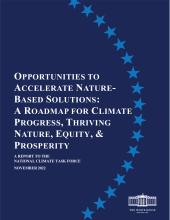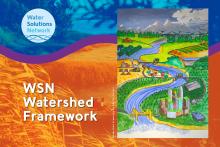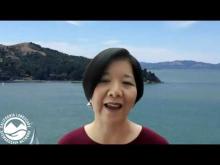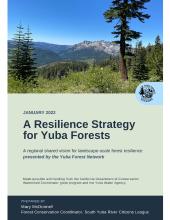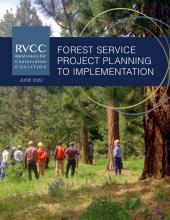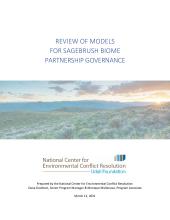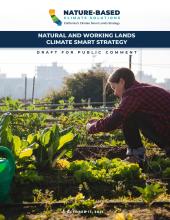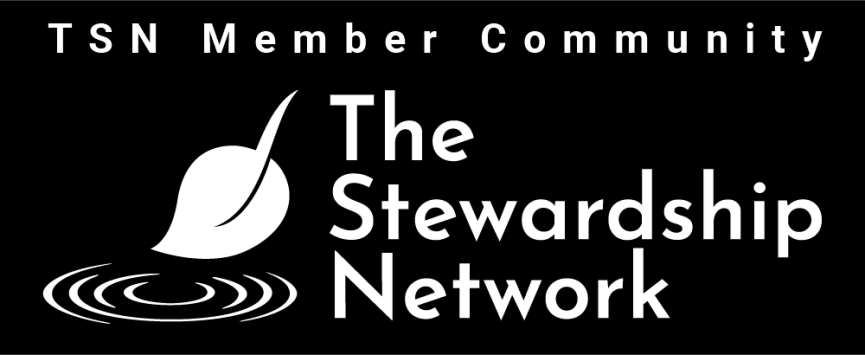Check out how collaboration is supporting landscape-scale species recovery, forest health, fire resilience, and habitat restoration across the state.
White House Council on Environmental Quality, November 2022
Provides five federal strategies to advance nature-based solutions for climate, equity, and economic resilience.
- Details
-
This report provides a roadmap with five strategic recommendations for federal agencies to unlock the potential of nature-based solutions and highlights bold Executive Office of the President actions designed to pave the way. Importantly, these recommendations position the United States to prioritize nature-based solutions as go-to options in fighting climate change, nature loss and inequities.
The recommendations in this report are some of the best opportunities we have to meet climate goals and grow climate-ready communities, economies, and sectors. All have a role to play in turning these recommendations into action. President Biden and his National Climate Task Force are in a position to act boldly and lead adoption of these recommendations, advancing naturebased solutions as powerful tools that the nation and the world need now.
Texas Hill Country Conservation Network , February 2022
Tracks trends in land, water, and development to guide conservation efforts in Texas Hill Country.
- Details
-
This project defines and calculates eight metrics for tracking trends related to changes in the natural resources of the Texas Hill Country. Dozens of organizations — nonprofits, government agencies, academic institutions and aligned private businesses — endeavor to protect the land, water and sky of this unique region. The metrics defined here will support these entities as they work individually and collectively through the Texas Hill Country Conservation Network (the Network) to both tell the story of the need for conservation and preserve the natural resources and heritage of the Texas Hill Country.
Consistent with the priority goals outlined by the Network, these metrics focus on: Population growth in unincorporated areas • Amount of conserved lands • Amount of developed lands • Pristine streams • Per capita water consumption • Spring flow • Night sky visibility • Conservation investment
Watershed Solutions Network, June 2022
Proposes a model for cross-sector watershed collaboration to align human activity with natural systems in California.
- Details
-
California’s long-standing efforts to integrate at a regional and/or watershed scale reflects the importance and value of aligning human activity with natural systems. Multiple state programs were (and are) designed to incentivize watershed and/or regional scale collaboration, and we have many examples of strong collaborations that cross sectors and jurisdictions. Despite the incentives and efforts, full-scale watershed collaborations across jurisdictions and sectors have remained largely elusive. This framework reflects the participants’ commitment to finding an expedient path to cross-jurisdictional, cross-sector watershed scale coordination of management scale actions that builds on and connects the promising work already in progress.
California Landscape Stewardship Network, May 2022
- Details
-
On May 19, 2022, Katherine Toy, Deputy Secretary for Access at California Natural Resources Agency, joined the network for the kickoff of a multi-part series sponsored by the CLSN's Justice, Equity, Diversity & Inclusion Roundtable for Healing Severed Connections. In a conversation moderated by Kindley Lawlor and hosted by Yakuta Poonawalla, Katherine offers her perspectives on why increasing access to natural and cultural sites in California is so important.
Yuba Forest Network, January 2022
Outlines collaborative strategies to restore forest resilience in Yuba through climate adaptation and stewardship.
- Details
-
The Yuba Forest Network aims to connect stewards of the Yuba watershed by uniting and building skills and efforts to create a resilient landscape. Modeled after Tahoe-Central Sierra Initiative's Resilience Framework, the purpose of this document is to describe a shared vision of forest health and resilience and desired outcomes for the region across stakeholders of the Yuba Forest Network.
Center for American Progress, October 2022
Highlights how rural communities need stronger capacity to benefit from federal infrastructure and climate programs.
- Details
-
This brief article links to two October 2022 reports CAP issued that assess the ways in which missed opportunities in implementing federal resilience programs exemplify the challenges facing rural communities.
Rural Voices for Conservation Coalition, June 2022
Offers tools and insights to improve project planning and implementation within the U.S. Forest Service.
- Details
-
Rural Voices for Conservation Coalition (RVCC) developed the following guidebook that charts the course of a Forest Service project, from planning through implementation. This document aims to help collaborative groups and other external partners better understand the full “lifecycle” of a Forest Service project and, in turn, develop a better sense for how and when to productively engage with various aspects of the agency’s work, including implementation.
SPUR, 2021
This toolkit helps communities design shared public spaces (like San Jose's Guadalupe River Park) where housed & unhoused residents can coexist. It focuses on design, equitable rules, and dialogue to define a social contract for all users.
- Details
-
In recent years the number of people experiencing homelessness has grown rapidly in many American cities, raising new questions about who public space is designed for. As more and more Bay Area residents find themselves without homes, many have defaulted to living in public spaces such as parks, plazas and squares. These spaces were not designed to be homes, however, and housed users voice concerns that the presence of unhoused residents degrades public spaces, rendering them unwelcoming or even unsafe.
At the same time, people who do not have access to stable housing are members of the community and should not be denied the use of public space simply because of their living situation. As long as our cities do not provide housing for all who need it, our neighborhoods will continue to face the challenge of how housed and unhoused users can coexist in public space.
This report introduces the toolkit, which can be downloaded at spur.org/coexistence, and offers considerations for community discussion.
National Center for Environmental Conflict Resolution, March 2021
Analyzes governance models to support collaborative conservation across the sagebrush biome.
- Details
-
The Udall Foundation's Center for Environmental Conflict Resolution reviewed three key collaborative partnership models (the North American Wetlands Management Plan and associated Joint Ventures, the Northwest Boreal Partnership, and the Chesapeake Bay Program) and four secondary models (Blackfoot Challenge, Crown of the Continent, the National Invasive Species Council, and the Southeast Conservation Adaptation Strategy) to identify lessons learned and best practices that could be applied to the development of a collaborative partnership in the sagebrush biome.
California Natural Resources Agency, October 2021
Outlines California’s plan to use nature-based solutions across eight land types to fight climate change, enhance resilience, and promote equity through nearly 200 scalable actions.
- Details
-
Our lands are a critical yet underutilized sector in California’s fight to achieve carbon neutrality and build resilience to the impacts of climate change. Healthy land can sequester and store carbon emissions, limit future carbon emissions into the atmosphere, protect people and nature from the impacts of climate change, and build resilience to future climate risks. Unhealthy lands have the opposite effect – they release more greenhouse gases than they store, increase climate risks to people and nature, and are more vulnerable to future climate change impacts.
This Strategy:
• Defines California’s eight natural and working landscapes.
• Describes how these lands can deliver on our climate change goals.
• Highlights priority nature-based climate solutions to address the climate crisis.
• Explores opportunities for regional climate smart land management.
• Identifies options to track nature-based climate action and measure progress.
• Outlines nearly 200 opportunities to scale climate smart land management across regions and sectors in California.


